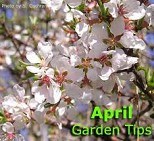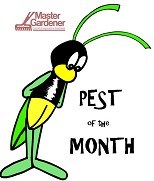Every year, insects and/or diseases defoliate some trees and we are often asked “will this tree die/be in trouble because all the leaves are gone?”. Usually we can say with confidence that defoliation is not a life-threatening event, but each case is different and to make a best guess, one must consider several variables that can work together to affect the outcome. Start with some questions:
- When did the event happen?
- Which leaves were lost?
- How much foliage was involved?
- Has this happened before? When?
- What was the weather life before and after?
- How vigorous was the tree before defoliation?
First, consider the way that an otherwise healthy tree functions with regard to accumulation and use of carbohydrates. Carbohydrates can be referred to as stored food and the amount of carbohydrates in a tree changes as the growing season progresses. As leaves grow in spring, they use stored food to get bigger and they expand so quickly that they are able to return little of anything to the tree. However, once the leaves reach full size, they begin to make more food than they use and are able to contribute excess photosynthate to storage cells to nourish next year’s complement of leaves. Near the end of the growing season, even though the foliage may still be green, photosynthetic activity slows down and there may be a small loss of food reserves are diverted to a spurt of late-season root growth.
How is the normal cycle affected by defoliation?
If enough leaves are lost between April and July in the Northeast, a typical deciduous tree will produce a second set of leaves to replace the originals. The second set is usually smaller and less photosynthetically efficient, but a tree will usually have enough reserves to allow it to develop and the second set of leaves provides a real net benefit to tree health. Defoliation later in the season (e.g. after August 1) is less likely to trigger refoliation, presumably because carbohydrate reserves have been almost, if not entirely, replaced.
Sometimes, refoliation in mid-season causes physiological processes intended for refoliation to begin but there is not enough time left in the growing season for the new leaves to form. In this case, the buds swell in preparation for refoliation but, because it is late in the season, the leaves may not emerge quickly enough and the tender, swollen bud is destroyed by the first hard freeze.
To see real-life examples of defoliation and its impact (or lack thereof) on tree health, consider tar spot on Norway maple. This disease causes conspicuous leaf spots on susceptible trees virtually every year with a severe defoliation episode every six years or so. However, the trees remain alive. Why? Because most of the damage occurs as leaves mature in late August and, by that time, the tree carbohydrate reserves have already been replenished and the defoliation has little consequence.
To complicate things just a bit, one must also consider the relative contribution that various leaves make the health and welfare of a tree. For instance, leaves in the upper canopy are usually smaller than those that are lower, but because they get full sun exposure, they make more photosynthate. Leaves lower in the crown are likely to be large but, because of shading from above, they contribute less to the resource pool. Thus it is logical to expect that some leaves in the crown of a tree are more expendable than others.
How much defoliation is damaging?
A classic series of experiments was carried out at the Harvard Forest in the mid-1960s to look at the effects of defoliation of red oak and red maple. In these experiments, trees were manually defoliated just after maximum leaf expansion. Son some, half the leaves were removed, on others 75% and on still others, 100%. In all cases, trees with 50% of their leaves removed were seemingly unaffected. There were no new leaves and other measurements were ‘normal’. If defoliation exceeded 50%, the trees responded by forming new leaves that were smaller and fewer in number than the amount removed. Overall, photosynthetic area at the end of the season was reduced by 20-60%.
A tree that is defoliated for only one year usually does not die or have much branch dieback unless it is already weak or unhealthy from another pest or root zone problem. However, if a tree is defoliated two or three years in a tow, especially when the timing and severity of defoliation cause refoliation, then even an otherwise vigorous tree may succumb.
Weather factors can have a great effect on a tree’s ability to cope with defoliation. If there is inadequate moisture available during refoliation, then leaf expansion may be further stunted. These small leaves in turn produce less food, which means fewer stored reserves for the following year. In addition, photosynthesis itself slows down with increased moisture stress.
Weather conditions from the previous year can affect the condition of a tree before it undergoes defoliation. If, during the previous year, a tree suffered from major moi9sture stress, this will adversely affect the health of the tree, making it more vulnerable to the effects of defoliation in the next year.
A tree in a favorable site with good soil and adequate water should be able to tolerate defoliation but a weaker tree may suffer unexpected consequences. Factors that interrupt carbohydrate production, such as drought or root disturbance, can affect tree vigor. If these limiting factors occur just a year or two before defoliation, the tree may look like it is in optimal health when, in fact, it may be operating at reduced vigor.
There are several ‘take-home’ messages here:
- Most deciduous trees can tolerate annual losses of 40% of leaves at any time during the growing season with little or no ill effects.
- If deciduous trees lose more than 50% of their leaves in one event between April and July, they will likely produce a second set of leaves which, although drawing on food reserves, results in a net benefit to tree growth.
- Even though the crown of a defoliated/refoliated tree may look good, growth and wound repair processes are slowed and the tree may be predisposed to attack by secondary invaders.
Adapted from: Branching Out:An integrated Pest Management Newsletter for Trees and Shrubs. Volume 11, No. 6, Cornell Cooperative Extension.
Courtesy Hort Notes. (Volume 15, Number 11, September 6, 2004)




